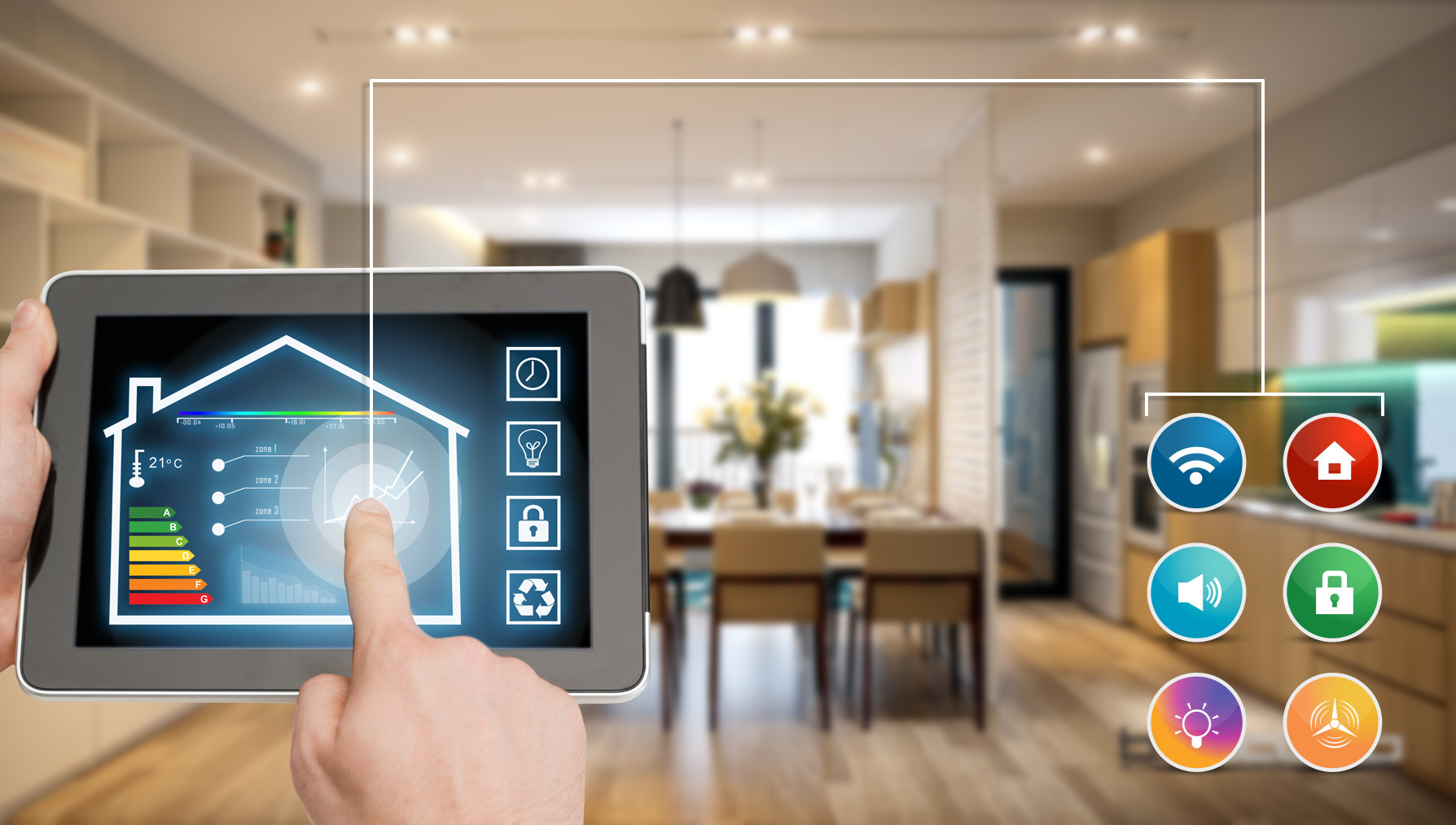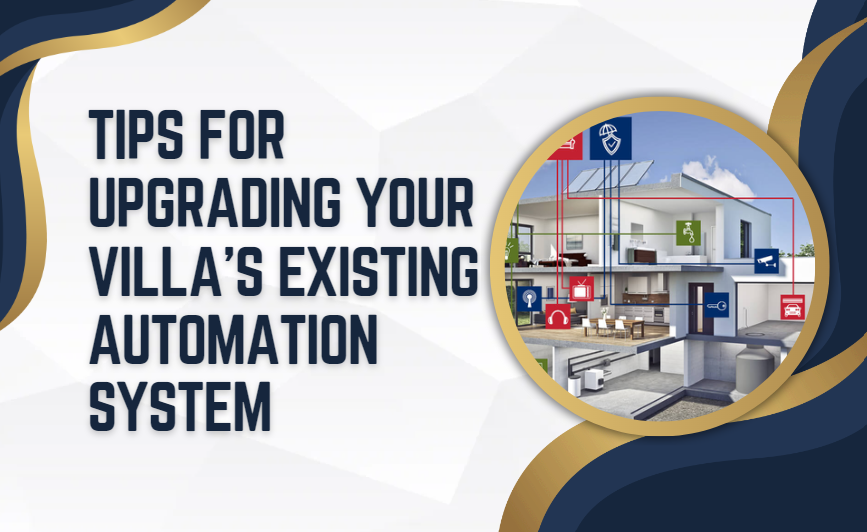Upgrading the automation system in your villa can seem like a daunting task, but it’s essential for keeping up with the latest technology and maintaining the comfort and efficiency of your home. With technology constantly advancing, your current system might be outdated and unable to keep up with new demands. This guide will walk you through the key considerations and practical tips for upgrading your villa’s automation system, making the process smoother and more effective.
Understanding Why an Upgrade is Necessary
The Importance of Keeping Up with Technology
Technology evolves rapidly, and what was cutting-edge a few years ago may now be obsolete. Upgrading your villa’s automation system ensures that you benefit from the latest features and improvements in technology. New systems offer better energy efficiency, improved security, and enhanced convenience. An outdated system might lack compatibility with newer smart devices and software, limiting its effectiveness and reducing its ability to integrate with other technologies.
Note – Ready to elevate your villa with cutting-edge technology? Discover how the latest Automation Systems can transform your home into a modern marvel. Contact UltraSound Dubai today to explore the best Automation Systems for Villa. Our experts will guide you through the upgrade process, ensuring you get the perfect solution tailored to your needs. Don’t wait—enhance your villa’s comfort, efficiency, and security now! Reach out to UltraSound Dubai for a consultation and start your journey toward a smarter home.
Improving Efficiency and Convenience
Modern automation systems come with features that significantly enhance the efficiency of your villa. These can include advanced climate control, better energy management, and improved lighting solutions. Upgrading your system can lead to reduced utility bills and a more comfortable living environment. For instance, newer systems often include smart thermostats that learn your preferences and adjust the temperature accordingly, leading to energy savings and increased comfort.
Evaluating Your Current System
Assessing Your Current System’s Performance
Before upgrading, it’s crucial to evaluate the performance of your existing automation system. Identify any issues you’ve been experiencing, such as sluggish performance, compatibility problems, or limited functionality. This assessment will help you understand which aspects need improvement and guide you in selecting the right upgrade options. Make a list of features you’re missing or problems you want to address to ensure the new system meets your needs.
Identifying Compatibility Issues
Check whether your current system is compatible with newer technologies. Compatibility is important to ensure that new devices and software can seamlessly integrate with your existing setup. If your system is too old, you might need a complete overhaul rather than just an upgrade. Determine which components can be retained and which need to be replaced or upgraded to avoid compatibility issues.
Choosing the Right Upgrade Path

Upgrading vs. Replacing Your System
Decide whether you need to upgrade specific components of your existing system or if a complete replacement is necessary. Upgrading individual components, such as adding new sensors or controllers, can be cost-effective and less disruptive. However, if your system is outdated or incompatible with modern technology, a full replacement might be more practical. Consider your budget, the extent of the upgrades needed, and the potential benefits of each option.
Researching the Latest Technology
Invest time in researching the latest automation technologies and trends. Look for advancements in smart home devices, energy management solutions, and security features. Modern systems offer a wide range of functionalities, from voice control and remote access to advanced analytics and artificial intelligence. Understanding these technologies will help you make informed decisions and choose the best options for your villa.
Selecting the Right Automation Components
Smart Controllers and Hubs
Smart controllers and hubs are the heart of any automation system. They connect various devices and allow you to manage them from a central point. When upgrading, consider investing in a high-quality smart hub that supports a wide range of devices and offers user-friendly interfaces. Look for features such as compatibility with popular smart home ecosystems, ease of use, and reliable performance.
Sensors and Actuators
Sensors and actuators play a crucial role in automating your home. Upgrading these components can enhance your system’s functionality and responsiveness. For example, smart sensors can detect changes in temperature, light, or motion and adjust settings accordingly. Actuators control devices like blinds and locks based on sensor inputs. Choose sensors and actuators that offer accurate performance and integrate seamlessly with your new system.
Ensuring Seamless Integration
Compatibility with Existing Devices
Ensure that the new automation system integrates well with your existing devices and infrastructure. Compatibility is key to avoiding technical issues and ensuring a smooth transition. If you have devices that you want to keep, verify that they are supported by the new system. This might involve checking compatibility lists or consulting with a professional to confirm that all your devices can work together effectively.
Professional Installation vs. DIY
Decide whether to install the new system yourself or hire a professional. DIY installation can save money but requires technical knowledge and time. If you’re not comfortable with installing complex systems or if you have a large and intricate setup, professional installation might be the better option. Professionals can ensure that everything is installed correctly, configured properly, and optimized for the best performance.
Testing and Fine-Tuning Your New System
Conducting Thorough Testing
Once the new system is installed, conduct thorough testing to ensure everything works as expected. Test all components, including smart devices, sensors, and controllers, to verify that they function correctly and communicate seamlessly. Check for any issues with connectivity, performance, or compatibility, and address them promptly. Proper testing helps ensure that your system operates smoothly and delivers the benefits you expect.
Adjusting Settings for Optimal Performance
After testing, fine-tune the settings of your new system to optimize its performance. Adjust parameters such as temperature schedules, lighting preferences, and security settings according to your needs. Customizing these settings can enhance the system’s efficiency and improve your overall experience. Regularly review and update settings as needed to keep your system aligned with your lifestyle and preferences.
Maintaining Your Upgraded System
Regular Maintenance Tips
To keep your upgraded automation system in top shape, follow regular maintenance practices. This includes checking for software updates, cleaning sensors and controllers, and monitoring system performance. Regular maintenance helps prevent issues and ensures that your system continues to function optimally. Set a schedule for routine checks and maintenance tasks to keep everything running smoothly.
Addressing Issues Promptly
If you encounter any issues with your new system, address them promptly to avoid disruptions. This might involve troubleshooting problems, seeking support from the manufacturer, or consulting with a professional. Timely resolution of issues helps maintain the system’s performance and prevents minor problems from escalating into major concerns.
Upgrading your villa’s automation system can greatly enhance your home’s functionality, efficiency, and comfort. By following these tips and carefully considering your needs and options, you can ensure a successful upgrade that delivers the benefits of modern technology and improves your overall living experience.
Conclusion
Upgrading your villa’s automation system is a strategic move that can significantly enhance your home’s comfort, efficiency, and security. By staying current with the latest technology, you not only improve your living experience but also ensure that your home remains a model of modern convenience and energy efficiency. From evaluating your current system and choosing the right components to ensuring seamless integration and maintaining optimal performance, every step in the upgrade process is crucial.
As you embark on this upgrade journey, remember that investing in a high-quality automation system pays off in long-term benefits. Whether you choose to handle the upgrade yourself or seek professional assistance, careful planning and consideration will help you achieve a smooth transition and optimal results.
For more insightful articles related to this topic, feel free to visit ranktheblog.com.au
